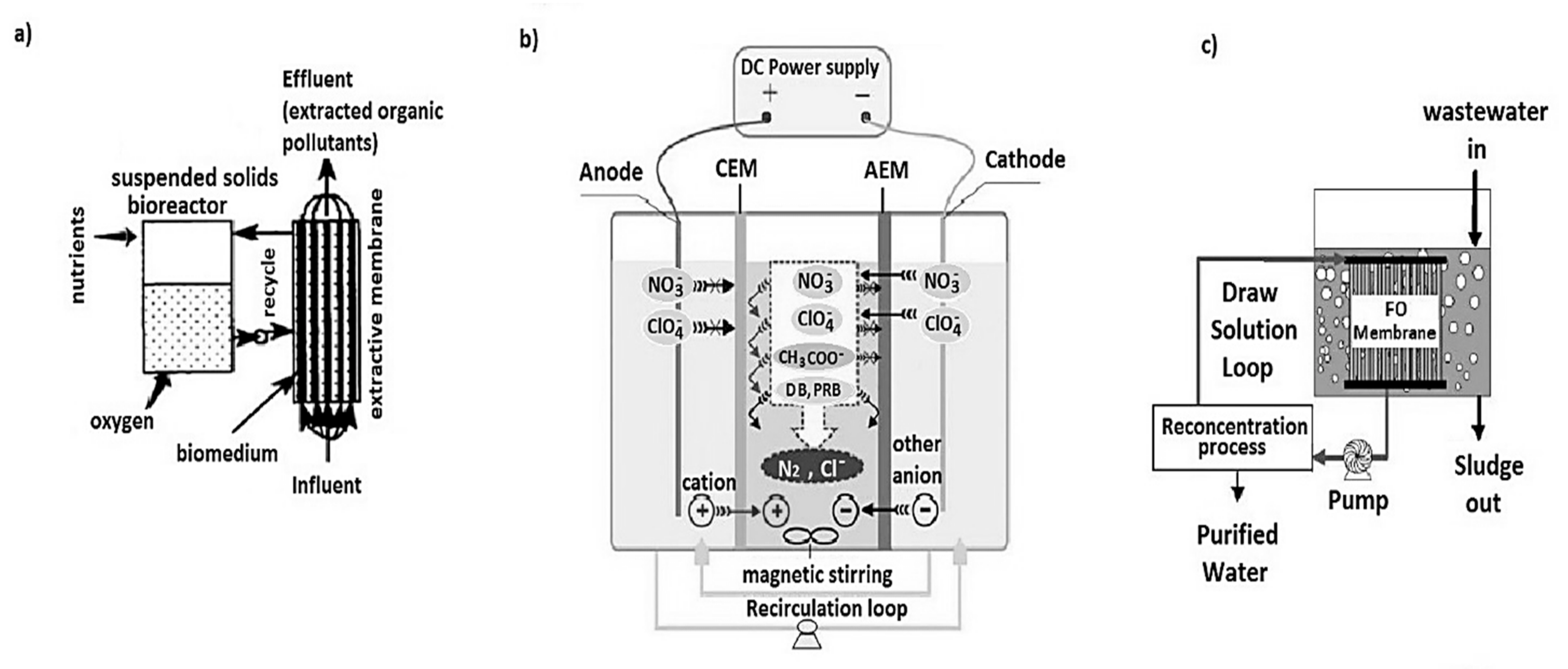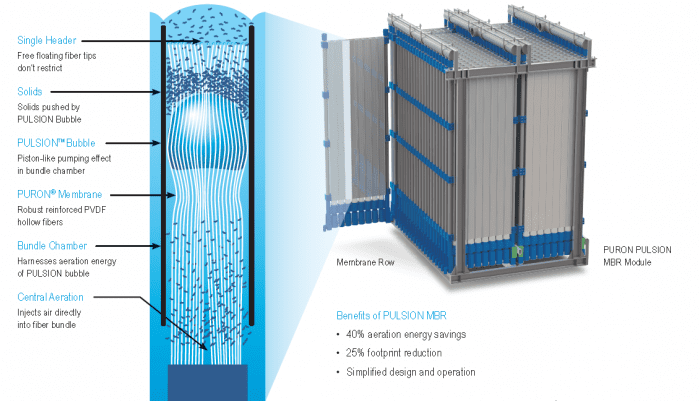How Membrane Bioreactor Technology Is Revolutionizing Wastewater Treatment
How Membrane Bioreactor Technology Is Revolutionizing Wastewater Treatment
Blog Article
Membrane Bioreactors Clarified: Efficient Solutions for Clean Water
Membrane bioreactors (MBRs) have actually arised as a sophisticated option for dealing with the pressing difficulties of wastewater therapy. By integrating biological processes with sophisticated membrane purification, MBRs not only enhance the quality of treated water however additionally lower the spatial requirements of treatment facilities. As environmental issues intensify, the role of MBR innovation in promoting lasting water monitoring comes to be increasingly significant. Nevertheless, the complexities of their operation, advantages, and prospective applications merit a closer assessment to completely recognize their impact on the future of water treatment.

What Are Membrane Layer Bioreactors?
Membrane bioreactors (MBRs) are innovative wastewater treatment systems that incorporate organic destruction processes with membrane filtration modern technology. This assimilation permits the efficient elimination of contaminants from water, making MBRs a recommended choice in different applications, consisting of community wastewater therapy and commercial effluent administration.

Among the essential benefits of MBRs is their ability to create top quality effluent, often ideal for reuse in irrigation or industrial processes. In addition, MBRs need a smaller sized impact compared to traditional therapy systems, making them optimal for city setups where room may be restricted.
In addition, MBRs can properly deal with differing influent lots and are much less vulnerable to the results of toxic shocks. These attributes add to their growing appeal as a lasting remedy for attending to the increasing demand for clean water while decreasing environmental influences.
How Membrane Bioreactors Job
While the procedure of membrane bioreactors (MBRs) may seem complicated, it fundamentally revolves around the harmony in between organic procedures and membrane filtration. MBRs incorporate an organic therapy procedure, generally triggered sludge, with a membrane layer separation system to treat wastewater effectively.
In an MBR system, wastewater is initial introduced into a bioreactor where microbes degrade organic matter and other pollutants. The organic activity minimizes the focus of contaminants while advertising the growth of biomass. Following this biological treatment, the mixed liquor undergoes membrane filtration, which can be microfiltration or ultrafiltration, depending on the wanted effluent high quality.
The membrane layers work as a physical obstacle, permitting water and tiny solutes to pass while keeping suspended solids and larger molecules. This enables the system to preserve a high focus of biomass within the reactor, improving the therapy efficiency.
Moreover, the continual splitting up of cured water from the biomass assists in a small style and reduces the footprint of the therapy facility. In general, the combination of organic degradation and membrane purification in MBRs causes efficient and dependable wastewater treatment, ensuring top notch effluent appropriate for different applications.
Advantages of MBR Modern Technology
One of the key benefits of membrane bioreactor (MBR) technology is its capability to create high-quality effluent with a considerably reduced footprint compared to conventional wastewater therapy methods. MBR systems properly incorporate biological therapy and membrane filtering, causing exceptional elimination of pollutants, consisting of put on hold solids, pathogens, and natural issue. This capability brings about effluent that usually satisfies or goes beyond strict regulatory criteria for reuse and discharge.
Additionally, MBR innovation permits for greater biomass focus, which improves the therapy efficiency and decreases the called for reactor volume. This compact layout is particularly helpful in urban areas where space is limited. The functional adaptability of MBR systems also indicates they can adapt to varying influent high qualities and circulation rates, making them appropriate for a vast array of applications.
Additionally, the reduced sludge manufacturing connected with MBR procedures adds to lower functional and upkeep prices. The membrane layers function as a physical obstacle, minimizing the risk of blocking and allowing longer functional periods between cleansing. Overall, the benefits of MBR technology make it an attractive remedy for lasting wastewater treatment, attending to both ecological concerns and the need for efficient resource management.
Applications of Membrane Layer Bioreactors
With their adaptability and performance, membrane layer bioreactors (MBRs) locate applications across different fields, consisting of local wastewater treatment, industrial procedures, and also water reclamation. In community settings, MBRs supply a compact option for dealing with wastewater, properly getting rid of pollutants while all at once producing top quality effluent that meets stringent governing criteria. This makes them specifically appropriate for areas with minimal room.
In commercial applications, MBR innovation is utilized for dealing with procedure water, particularly in sectors such as food and drink, drugs, and petrochemicals. These sectors take advantage of MBRs' capability to deal with high organic lots and their performance in recuperating valuable sources from wastewater, such as nutrients and water.
Additionally, MBRs play an important role in water recovery efforts, enabling the reuse of dealt with wastewater for watering, commercial procedures, and even as drinkable water after more treatment (Membrane Bioreactor). Their effectiveness in getting rid of pathogens and contaminants makes them a reputable option for guaranteeing water top quality in various reuse applications
Future of Water Therapy Solutions
The future of water treatment remedies is positioned for transformative improvements driven by technical innovation and raising environmental understanding. As global water shortage becomes a pushing concern, new methods, including membrane bioreactor (MBR) systems, are set to play an essential duty in enhancing the performance and sustainability of water therapy processes.
Arising innovations Our site such as expert system and artificial intelligence are expected to enhance therapy procedures, enabling real-time tracking and anticipating maintenance. This will improve the total reliability and efficiency of water treatment facilities. Innovations in membrane layer products, such as graphene and nanofiltration, assure to enhance permeation prices and lower fouling, leading to lower energy consumption and operational expenses.
Furthermore, the combination of renewable resource sources into water therapy plants will contribute to greener methods. The circular economy model will certainly also gain grip, motivating the recovery of valuable resources from wastewater, such as nutrients and power.
Final Thought

Membrane bioreactors (MBRs) have arised as a sophisticated remedy for dealing with the pushing difficulties of wastewater treatment. By incorporating organic processes with innovative membrane layer filtration, MBRs not learn this here now just boost the quality of cured water however also decrease the spatial needs of treatment centers.One of the essential benefits of membrane layer bioreactor (MBR) modern technology is its capacity to produce top quality effluent with a dramatically decreased impact Visit Website contrasted to standard wastewater treatment techniques.With their flexibility and efficiency, membrane bioreactors (MBRs) find applications across various markets, consisting of municipal wastewater treatment, industrial procedures, and even water recovery.In conclusion, membrane bioreactors stand for a substantial advancement in wastewater treatment innovation, incorporating biological procedures with reliable membrane layer purification to create high-quality effluent.
Report this page